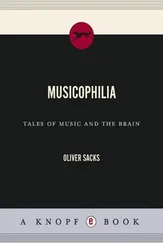Thomas Mann provides a lovely description of silica gardens in Doctor Faustus :
I shall never forget the sight. The vessel… was three-quarters full of slightly muddy water – that is, dilute water-glass – and from the sandy bottom there strove upwards a grotesque little landscape of variously coloured growths: a confused vegetation of blue, green, and brown shoots which reminded one of algae, mushrooms, attached polyps, also moss, then mussels, fruit pods, little trees or twigs from trees, here and there of limbs. It was the most remarkable sight I ever saw, and remarkable not so much for its appearance, strange and amazing though that was, as on account of its profoundly melancholy nature. For when Father Leverkuhn asked us what we thought of it and we timidly answered him that they might be plants: ‘No,’ he replied, ‘they are not, they only act that way. But do not think the less of them. Precisely because they do, because they try to as hard as they can, they are worthy of all respect.’
Griffin was not only an educator at many levels – he wrote The Radical Theory in Chemistry and A System of Crystallography , both more technical than his Recreations – but also a manufacturer and purveyor of chemical apparatus: his ‘chemical and philosophical apparatus’ was used throughout Europe. His firm, later to become Griffin & Tatlock, was still a major supplier a century later, when I was a boy.
I read John Hersey’s Hiroshima a few years later, and I was struck by this passage:
When he had penetrated the bushes, he saw there were about twenty men, and they were all in exactly the same nightmarish state: their faces were wholly burned, their eyesockets were hollow, the fluid from their melted eyes had run down their cheeks. (They must have had their faces upturned when the bomb went off…)
Such thoughts about ‘tuning’, I was later to read, had first been raised in the eighteenth century by the mathematician Euler, who had ascribed the color of objects to their having ‘little particles’ on their surface – atoms – tuned to respond to light of different frequencies. Thus an object would look red because its ‘particles’ were tuned to vibrate, resonate, to the red rays in the light that fell on it:
The nature of the radiation by which we see an opaque object does not depend on the source of light but on the vibratory motion of the very small particles [atoms] of the object’s surface. These little particles are like stretched strings, tuned to a certain frequency, which vibrate in response to a similar vibration of the air even if no one plucks them. Just as the stretched string is excited by the same sound that it emits, the particles of the surface begin to vibrate in tune with the incident radiation and to emit their own waves in every direction.
David Park, in The Fire Within the Eye: A Historical Essay on the Nature and Meaning of Light , writes of Euler’s theory:
I think this was the first time anyone who believed in atoms ever suggested that they have a vibrating internal structure. The atoms of Newton and Boyle are clusters of hard little balls, Euler’s atoms are like musical instruments. His clairvoyant insight was rediscovered much later, and when it was, nobody remembered who had it first.
Now, of course, none of these chemicals can be bought, and even school or museum laboratories are increasingly confined to reagents that are less hazardous – and less fun.
Linus Pauling, in an autobiographical sketch, described how he, too, obtained potassium cyanide (for a killing bottle) from a local druggist:
Just think of the differences today. A young person gets interested in chemistry and is given a chemical set. But it doesn’t contain potassium cyanide. It doesn’t even contain copper sulfate or anything else interesting because all the interesting chemicals are considered dangerous substances. Therefore, these budding young chemists don’t have a chance to do anything engrossing with their chemistry sets. As I look back, I think it is pretty remarkable that Mr. Ziegler, this friend of the family, would have so easily turned over one-third of an ounce of potassium cyanide to me, an eleven-year-old boy.
When I paid a visit not long ago to the old building in Finchley which had been Griffin & Tatlock’s home a half century ago, it was no longer there. Such shops, such suppliers, which had provided chemicals and simple apparatus and unimaginable delights for generations, have now all but vanished.
Many years later, when I read Keynes’s wonderful description of Lloyd George (in The Economic Consequences of the Peace ), I was strangely reminded of Auntie Lina. Keynes speaks of the British prime minister’s ‘unerring, almost medium-like sensibility to everyone immediately around him.’
To see [him], watching the company with six or seven senses not available to ordinary men, judging character, motive, and sub-conscious impulse, perceiving what each was thinking, and even what each was going to say next, compounding with telepathic instinct the argument or appeal best suited to the vanity, weakness, or self-interest of his immediate auditor was to realize that the poor President [Wilson] would be playing blind man’s buff in that party.
Hooke himself was to become a marvel of scientific energy and ingenuity, abetted by his mechanical genius and mathematical ability. He kept voluminous, minutely detailed journals and diaries, which provide an incomparable picture not only of his own ceaseless mental activity, but of the whole intellectual atmosphere of seventeenth-century science. In his Micrographia , Hooke illustrated his compound microscope, along with drawings of the intricate, never-before-seen structures of insects and other creatures (including a famous picture of a Brobdingnagian louse, attached to a human hair as thick as a barge pole). He judged the frequency of flies’ wingbeats by their musical pitch. He interpreted fossils, for the first time, as the relics and impressions of extinct animals. He illustrated his designs for a wind gauge, a thermometer, a hygrometer, a barometer. And he showed an intellectual audacity sometimes even greater than Boyle’s, as with his understanding of combustion, which, he said, ‘is made by a substance inherent, and mixt with the Air.’ He identified this with ‘that property in the Air which it loses in the Lungs.’ This notion of a substance present in limited amounts in the air that is required for and gets used up in combustion and respiration is far closer to the concept of a chemically active gas than Boyle’s theory of igneous particles.
Many of Hooke’s ideas were almost completely ignored and forgotten, so that one scholar observed in 1803, ‘I do not know a more unaccountable thing in the history of science than the total oblivion of this theory of Dr. Hooke, so clearly expressed, and so likely to catch attention.’ One reason for this oblivion was the implacable enmity of Newton, who developed such a hatred of Hooke that he would not consent to assume the presidency of the Royal Society while Hooke was still alive, and did all he could to extinguish Hooke’s reputation. But deeper than this is perhaps what Gunther Stent calls ‘prematurity’ in science, that many of Hooke’s ideas (and especially those on combustion) were so radical as to be unassimilable, even unintelligible, in the accepted thinking of his time.
In his biography of Lavoisier, Douglas McKie includes an exhaustive list of Lavoisier’s scientific activities which paints a vivid picture of his times, no less than his own remarkable range of mind: ‘Lavoisier took part,’ McKie writes,
Читать дальше












